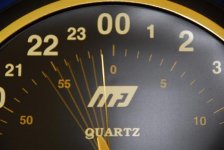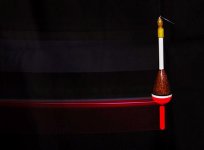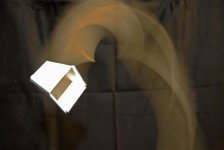picker77
Established
This is not specifically RF related, it would apply to just about any still camera. But here's an odd question I've been mulling over for a while:
I'd like to get a close up shot of a large clock face with a sweep second hand showing the passage of time, namely the movement of the second hand. Not a "jerky one-second-at-a-time" type of a quartz clock, but the older type clock movement that works from AC line voltage--the kind with a true smooth-moving sweep second hand. I want to show motion of the second hand over several degrees of it's travel. Sounded easy so far, but here's the kicker: I'd like to do it *without* blurring of the rest of the clock face, AND have the blur culminate in a sharp image of the second hand. Ideally what I'd like to have is a faint, blurred image of the second hand which increases in clarity until it is sharp and clear and frozen in time. Sort of like one of those sweep radar images you always see in the movies, where the rotating trace on the screen fades slowly out behind the movement of the main bright sweep.
Impossible without multiple exposures? So far I can't see a way to do it. Maybe some sort of timed exposure with a high speed repeating strobe? Or is this simply an impossible task for a still camera?
Obviously I have had too much time on my hands lately... It's the 105° weather, it's kept me indoors a lot.
I'd like to get a close up shot of a large clock face with a sweep second hand showing the passage of time, namely the movement of the second hand. Not a "jerky one-second-at-a-time" type of a quartz clock, but the older type clock movement that works from AC line voltage--the kind with a true smooth-moving sweep second hand. I want to show motion of the second hand over several degrees of it's travel. Sounded easy so far, but here's the kicker: I'd like to do it *without* blurring of the rest of the clock face, AND have the blur culminate in a sharp image of the second hand. Ideally what I'd like to have is a faint, blurred image of the second hand which increases in clarity until it is sharp and clear and frozen in time. Sort of like one of those sweep radar images you always see in the movies, where the rotating trace on the screen fades slowly out behind the movement of the main bright sweep.
Impossible without multiple exposures? So far I can't see a way to do it. Maybe some sort of timed exposure with a high speed repeating strobe? Or is this simply an impossible task for a still camera?
Obviously I have had too much time on my hands lately... It's the 105° weather, it's kept me indoors a lot.





